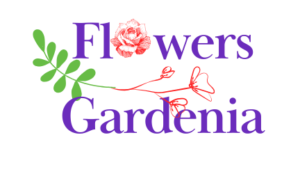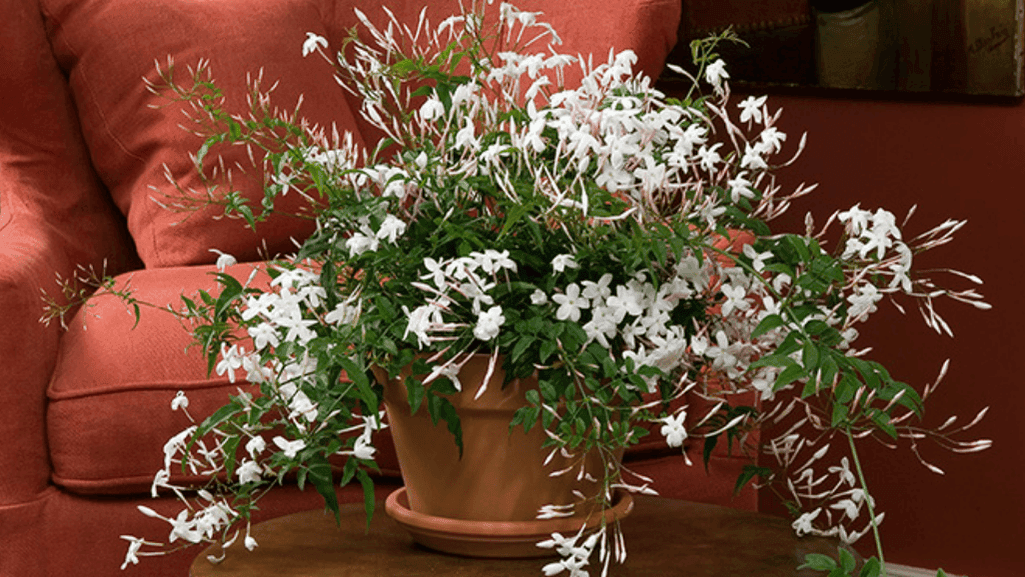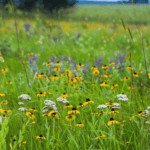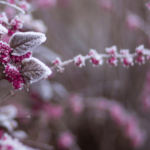
Beautiful flowers gardenia Plants For Your homes

This roundup helps you pick the right fragrant climber for scent, coverage, and visual impact. We compare popular names and forms, from evergreen twining types to fast-growing spring bloomers. Expect clear ratings on growth habit, bloom timing, and landscape use.
Performance matters: featured choices show vigorous growth and easy training on fences, trellises, or containers. Many of the picks produce showy white flowers and a sweet, honey-like scent that defines patios and entries.
We note hardiness zones up front and explain pot-growing for colder regions. The Editor’s Pick, star jasmine, offers fast coverage, glossy evergreen foliage, and strong online value right now.
Home gardeners are choosing sweet-smelling climbers for fast coverage and instant charm. These vining plants deliver a classic look while filling small gardens and patios with a memorable scent.
Many popular types thrive in full sun to partial shade, so placement is flexible across yards and balconies. Some species bloom in cool nights, so indoor pots can show late-winter blooms too.
Fast growth and glossy foliage mean fences, trellises, and containers soften quickly. Vigorous twining habits can cover screens or spill over pots within a single season.
This review helps you match the right type to your sun exposure, bloom goals, and maintenance style. Strong retail availability in the U.S. makes these vines an accessible, budget-friendly choice.
Our top pick combines quick coverage with a nighttime perfume that sets patios aglow. Star jasmine earns high marks for easy training, glossy evergreen leaves, and abundant evening scent.
White flowers open into pinwheel-like blooms that perfume warm evenings. Mature size is about 15–20 ft tall by 6–8 ft wide with a moderate growth rate.
Hardiness zones: USDA 8–11 (hardy to roughly 20°F). Blooms appear in spring and summer and perform well in high temperatures once established.
Current deal: FastGrowingTrees offers a 1-gallon at $34.95 (regularly $67.95) with code PLANT20 for an extra 20% off. Orders include a 60-day Alive & Thrive Guarantee and free shipping over $99—making this a low-risk choice for quick, fragrant screening.
Here are standout climbers and shrub forms to test for fragrance, bloom time, and garden role. Each entry lists habit, ideal light and soil, and the best use in a small garden or patio.
Vigorous twiner to about 20 ft with winter pink buds that open to pale white-pink blooms in spring.
Prefers bright light, steady moisture, and well-drained humusy soil (pH 5.5–7.0). Best in zones 8–11 for outdoor planting or as a late-winter indoor fragrant display.
A compact, many-petaled plant near 5 ft with an intense tea-like scent. It blooms repeatedly in warm months and is ideal in containers on sun-warmed patios.
Also known as the tea jasmine, it fits USDA zones 9–11 and adds year-round interest where winters are mild.
This semi-evergreen shrub-vine brings cheerful yellow blooms and low-maintenance habits. It tolerates drought better than many and suits borders, slopes, and informal hedging.
Use it where you want color without constant fuss; zones 8–10 are best.
The classic climber with strong white flowers and a powerful scent. It reaches 20–30 ft and handles slightly cooler zones (7–10) than most.
Plant for large trellises, pergolas, or entryway screens where fragrance and abundant white blooms are the goal.
“Most of these types favor full sun to partial shade and well-drained, humusy soil—plan supports early to guide twining stems.”
A true trailing habit means stems that tuck over edges, spill from pots, and gently twine around supports. This form creates soft motion and helps vines cover railings, low walls, or trellis inserts in window boxes.
Training basics: secure young growth to rungs or wires with loose ties so stems can thicken without damage. Space clips slightly away from the stem to avoid girdling as the vine grows.
Quick-impact placements include railings, tall containers with obelisks, and retaining walls where a spillover look is desired. Full sun sites promote denser foliage and more blooms, while partial shade can temper vigor and save water.
Pairing ideas: underplant large containers with drought-tolerant companions or weave clematis for seasonal color. For a reliable go-to, the name star jasmine remains a top choice for glossy foliage and fragrant evening blooms.
Quick review: this habit suits garden accents and containers where graceful drape and scent matter most.
Light levels shape vigor, flower count, and how your vine fits the space.
Full sun usually gives denser growth and more blooms. Plants in bright sunlight set more buds and show stronger color.
Partial shade keeps leaves cooler and reduces water stress in hot sites. Expect fewer blooms but healthier foliage in harsh southern exposures.
Choose white flowers for night visibility and classic fragrance near patios.
Yellow types add daytime cheer, while pink-budded forms give an early-season pop. For scent, sambac and officinale are most perfumed; some yellow types are milder.
“Pick a plant that balances color, scent, and care so your review of success is simple and repeatable.”
A quick zone check helps you decide whether to plant in soil or keep your vine in a pot. Most of the plants in this review perform best outdoors in USDA zones 8–11. That simple match guides where you site and how you protect specimens year after year.
Star jasmine and common jasmine are the hardiest picks, extending to cooler edges (common into zones 7–10). Sambac needs warmer settings or container protection to avoid winter loss.
Many vines set buds when nights drop by about 15°F from daytime temps—pink forms respond well to that cue. Brief 40°F nights are usually fine, but sustained freezing can kill stems and buds.
“Pick varieties that hold foliage and structure in your zone to keep spaces attractive through the year.”
Good soil and steady moisture are the foundation of robust vines and better blooms. Aim for loose, humus-rich media that drains sharply to avoid root stress.
Soil profile: use a loose, humus-rich mix that allows air and water to move freely. This maximizes nutrient uptake and prevents rot.
pH requirements: keep the root zone slightly acidic to neutral — about 5.5–7.0 — for reliable growth and flowering response.
For containers, use a peat-based potting mix amended with perlite or bark for added airflow. Make sure pots have large drainage holes to avoid waterlogging.
Keep the plant lightly moist during active growth and allow a slight dry-down in cooler months. Star jasmine tolerates short dry spells once established, but blooms best with consistent moisture.
“Wilting or leaf drop can signal both over- and underwatering—feel the soil before you change your routine.”
This short review of soil and water basics helps you match types, placement, and care so plants perform reliably in sun or shade.
Matching structure to growth habit makes training young vines faster and less work later. Choose lattice, obelisks, or taut wire grids so twining stems have narrow things to wrap around. This reduces rubbing and broken runners as the plant thickens.
Set root balls level with the surrounding soil and leave air space so leaves dry quickly after rain. Guide main leaders upward first, then fan laterals out for fuller coverage.
Quick tips:
Pick heavy, stable pots with large drainage holes. Any pot type works if roots drain freely.
Use a free-draining potting mix and refresh the top inches yearly. Repot fully every 2–3 years to prevent rootbound stress.
“Shift patio plants outdoors in late spring and bring them inside before nights approach 40°F.”
Maintenance sweep: water pots more often, feed lightly with a bloom-focused formula, remove dead foliage, and redirect runners to keep an even, attractive screen.
A simple seasonal plan—trim, feed, and hydrate—gives the best bloom returns for these climbers. Follow a few straightforward steps in spring and after the main flower flush to keep vines healthy and flowering.
Time your pruning: cut immediately after the main flowering flush so you don’t remove next season’s buds. For many vining types, a somewhat aggressive pruning at the start of the growing season controls rampant growth and improves structure.
Shape with intention: remove weak, crossing, or overly long stems and encourage lateral shoots for fuller coverage. Use clean, sharp pruners and disinfect between plants to reduce disease risk.
Feeding formula: choose a low-nitrogen, phosphorus-forward fertilizer during active growth to improve bud set and flower quality. Indoor plants do well on diluted, balanced feeds through the season.
Water sync: keep moisture steady during bud development—stress before bloom reduces flower count. Adjust watering by zones and exposure so roots never stay waterlogged or bone dry.
“If blooming drops off, reassess light, fertilizer ratios, and pruning timing before the next cycle.”
For a quick pruning review and extra tips on pairing clematis and other climbers, see our pruning review.
Potted climbers reward bright light and a seasonal cool-down with more buds and stronger scent. Place vining specimens in the brightest spot you have to avoid leggy growth and weak flowering. South- or west-facing windows work best; supplement with grow lights if natural light is limited.
Light matters: keep plants near direct sun when possible and move them into light shade on very hot days to reduce stress.
Keep humidity moderate with pebble trays or a room humidifier. Water so the mix stays lightly moist and ease off in winter. A short drop in fall temperatures helps set buds and improves jasmine bloom indoors.
Set a yearly routine: move containers out after the last frost, return them inside before nighttime temperatures near 40°F. Check hardiness zones for your variety—some can remain outdoors year-round in warm zones.
“A simple indoor rhythm makes potted vines more reliable and fragrant all year.”
Small design shifts—like using climbers as soft frames—turn plain doors into fragrant focal points.
Entry framing: train slender trellises on either side of a doorway to create a scented welcome. Mix climbers with low shrubs and container plants for layered texture.
Pergola drape: weave vines along rafters to build seasonal shade and an evening scent zone for dining outdoors.
“A thoughtful layout makes scent and structure work together for year-round charm.”
This short review helps you match layout and plant choices so your entry and outdoor rooms perform well.
Quick comparison: this compact review contrasts bloom season, scent strength, and growth habit so you can choose the best plant for screening, containers, or low hedging.
Fragrance scale: strongest—J. sambac and J. officinale; sweet and steady—star jasmine; minimal—J. mesnyi.
Bloom windows: sambac repeats through warm months; pink polyanthum peaks late winter to spring; star jasmine blooms spring into summer.
Habit contrast: star jasmine and officinale work best as vines for trellises and pergolas. Mesnyi behaves like an evergreen shrub or sprawling vine for banks and informal hedges.
“Choose by scent, season, and habit—star jasmine remains the quick, fragrant pick for warm U.S. regions.”
Purchase tip: check nursery tags for hardiness zones and bloom timing so the scent and seasonal display match your design goals.
When foliage drops or flowers fail, start with simple checks of soil dampness and light exposure. Early diagnosis saves stems and keeps future bloom on track.
Diagnose leaf drop by feeling the root zone first—soggy or bone-dry soil are the usual culprits. Insufficient sunlight reduces flower set and weakens growth, making disease more likely.
Inspect nodes and leaf undersides for sticky residue, cottony mealybugs, or hard scale bumps. Isolate affected plants to stop spread.
“A weekly check and clean pruning routine catches problems early and keeps vines resilient.”
Keep pruning tools clean between cuts and monitor regularly. This short review of corrections meets basic care requirements and helps preserve your jasmine and other climbers.
Quick, reliable propagation methods help you expand favorite cultivars without buying new plants. This short review focuses on stem-tip cuttings for cloning and seed starts when you have time. Follow basic requirements and pick a warm, bright spot for best results.
Take 6-inch stem-tip pieces with at least one node. Remove all but 1–2 leaves and optionally dip the base in rooting hormone.
Soak seeds 24 hours and sow roughly three months before last frost. Germination can take up to 30 days.
“Favor cuttings for uniform results; use seeds when you want genetic variety.”
Choose one reliable vine to start—then build around it. Begin with star jasmine for fast coverage, scent, and value, and use this review to compare other names and forms.
Match your selection to your garden by checking hardiness zones and deciding if the specimen will live in soil or a pot. Pick types that suit your available sun or shade and the visual role you want.
Keep care simple: well-drained soil, sensible watering, and prompt post-bloom pruning. In cooler areas, container culture lets you enjoy blooms each year with easy winter protection.
Final step: pick a support now, buy during current promotions with guarantees, and share your results and favorite name to help other gardeners decide.




